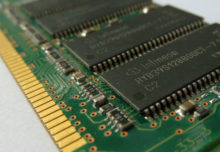
Global warming is real. It’s no longer in any doubt that the scale of artificial waste created by humans across the globe is having a negative impact planet Earth.
The standard procurement model for buying computer hardware ‘as new’ is damaging to the environment. Yes, performance and quality matter, and on top of that environmental impact is becoming increasingly important too.
Here’s how buying refurbished IT equipment can help lower your carbon footprint.
Electrical hardware and the environment
Electronic waste or e-waste is the rubbish we generate from surplus, broken and obsolete electronic devices – in this case laptops, desktops and tablets.
A study by the United Nations University found that 44.7 million tonnes of e-waste was generated in 2016. This was up 8% from 2014, that’s an even faster growth rate than plastic waste. To put it into perspective, it’s the equivalent in weight of about 9 Great Pyramids of Giza. For those who have never held a Great Pyramid and only understand weight in terms of elephants, that’s about 6.1 million elephants worth of e-waste every year.
The outlook for the future of e-waste is not positive, with experts forecasting a further 17% increase to 52.2 million metric tonnes of e-waste, by 2021.
The environmental case for refurbished IT equipment
If you want to build a computer, you are going to need about half the periodic table of elements – more precisely, 50 of the 90 elements.
Lead, chromium, cadmium, mercury, and bromine are just a few of the toxic materials need to build a computer. The average desktop weighing around 24kg with a 27-inch monitor would need 10 times its weight in chemicals and fossil fuels to manufacture. By keeping manufactured parts for their intended use, refurbishing retains all the materials contained in the equipment.
160 million laptops are manufactured every year. 160,000 laptops are disposed of daily in the EU, up to 70% of the computers could be reused. By choosing refurbished instead of new you’re extending the equipment lifecycle and reducing the demand for new computers. Ultimately, this reduces the energy consumption required to make computers, conserving the earth’s materials.
Does refurbished IT equipment stack up?
Performance and quality are the two main concerns we hear from organisations weighing up the option of being more sustainable against productivity and performance.
We’ve all been frustrated by a 3-4 year old computer that takes an aeon to boot up and or complete simple tasks. The most common reason for this is that over time, software degrades or corrupts, developing interoperability conflicts and many other glitches.
A computer that is repaired, cleaned, and has fresh software installed that is native to it will runs as well as the day it was new. One important thing to know is that a four-year-old computer needs software that runs well on four-year-old equipment, and not the latest software versions.
At Recompute, our refurbished laptops and refurbished desktops are at the peak of their reliability curve and ready for 5+ years of use with better reliability rates than the average new model. Learn more about our refurbishment process to so you can order with confidence.
The bottom line
Only the extension of the life of the devices currently in circulation, through their maintenance, refurbishment, and reuse, can have a meaningful effect on their environmental impact.
You might not be able to see the tangible effects of your decision to buy refurbished over new, but you can take away peace of mind knowing that you’re doing your part to help reduce your carbon footprint as a consumer.



